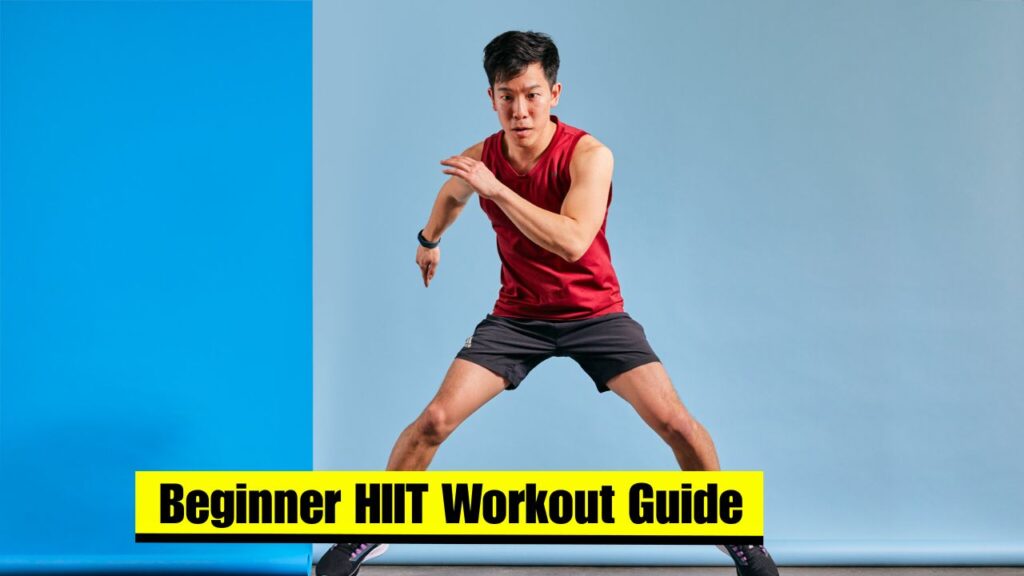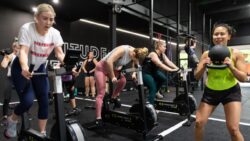HIIT for Beginners – High-Intensity Interval Training (HIIT) has gained immense popularity among fitness enthusiasts in Australia for its time-efficient and effective fat-burning results. For beginners, HIIT offers a powerful way to improve stamina, metabolism, and overall cardiovascular health without spending hours in the gym. However, starting HIIT incorrectly can lead to injuries or burnout. This guide will help Australian beginners understand how to start strong, maintain consistency, and avoid the most common mistakes when beginning a HIIT routine. Whether you’re training at home or joining a local fitness studio, this article has you covered.

Starting HIIT Workouts for Australian Beginners
Australian beginners eager to start HIIT workouts should first focus on building a solid foundation. Begin with short sessions, such as 15 to 20 minutes, combining simple moves like jumping jacks, squats, and push-ups. These exercises can be modified for various fitness levels, allowing gradual progression. It’s essential to warm up before each session and cool down afterward to reduce the risk of injury. For Australians living in warmer regions, hydration and proper ventilation are crucial during high-intensity exercises. Consistency and correct form matter more than speed—always aim for quality over quantity when performing each interval.
 Inside HIIT 5158 – Why Adelaide’s South Road Gym Is the Ultimate High-Intensity Destination
Inside HIIT 5158 – Why Adelaide’s South Road Gym Is the Ultimate High-Intensity Destination
Common HIIT Mistakes Made by Australians
Many Australians starting their HIIT journey make common mistakes such as skipping warm-ups, ignoring rest days, or overestimating their endurance. Doing too much too soon can lead to muscle fatigue or joint strain. Another mistake is neglecting proper nutrition; HIIT requires balanced meals rich in proteins and healthy carbohydrates to sustain energy levels. Beginners should also avoid comparing their progress to others—HIIT success depends on individual stamina and recovery rate. Setting realistic goals, tracking workouts, and resting adequately can help Australians enjoy sustainable progress without injury or burnout.
| Common Mistake | How to Avoid It |
|---|---|
| Skipping Warm-Up | Start with 5–10 minutes of light cardio |
| Overtraining | Limit HIIT to 3–4 sessions per week |
| Poor Form | Focus on controlled movements and posture |
| No Rest Days | Include 1–2 recovery days weekly |
| Ignoring Nutrition | Eat balanced meals with lean protein and whole grains |
HIIT Safety Tips for Australian Citizens
Safety should always come first for Australian citizens beginning HIIT training. Invest in supportive footwear to minimize joint stress and choose shock-absorbing surfaces like gym mats or grass. Beginners should monitor their heart rate and avoid pushing beyond 85% of their maximum effort. In Australia’s hot climate, exercising during cooler parts of the day—morning or evening—is recommended. If you experience dizziness or shortness of breath, stop immediately and rest. Listening to your body ensures steady progress without compromising your health. Remember, gradual improvement leads to lasting results in HIIT fitness.
HIIT Progression Tips for Australians
As Australians become more confident with HIIT, they can gradually increase intensity or duration to boost performance. Adding resistance bands, dumbbells, or incline variations can challenge different muscle groups. Beginners can also use timers or fitness apps to track intervals and ensure balanced rest periods. Recovery is just as important as effort—adequate sleep and hydration help muscles repair and grow stronger. Staying consistent and disciplined will transform your endurance, metabolism, and energy levels over time, making HIIT a sustainable and rewarding fitness lifestyle across Australia.
Frequently Asked Questions (FAQs)
1. How many days a week should beginners do HIIT?
Beginners in Australia should start with 2–3 HIIT sessions per week, allowing recovery between workouts.
2. Can HIIT help with weight loss for Australians?
Yes, HIIT effectively boosts metabolism and burns fat, helping Australians achieve weight loss goals faster.
3. Is HIIT safe for seniors in Australia?
With medical approval and low-impact exercises, HIIT can be safe and beneficial for Australian seniors.
4. What should I eat before a HIIT workout?
Eat a light meal with protein and carbs, such as yogurt and fruit, about 30–45 minutes before starting.



